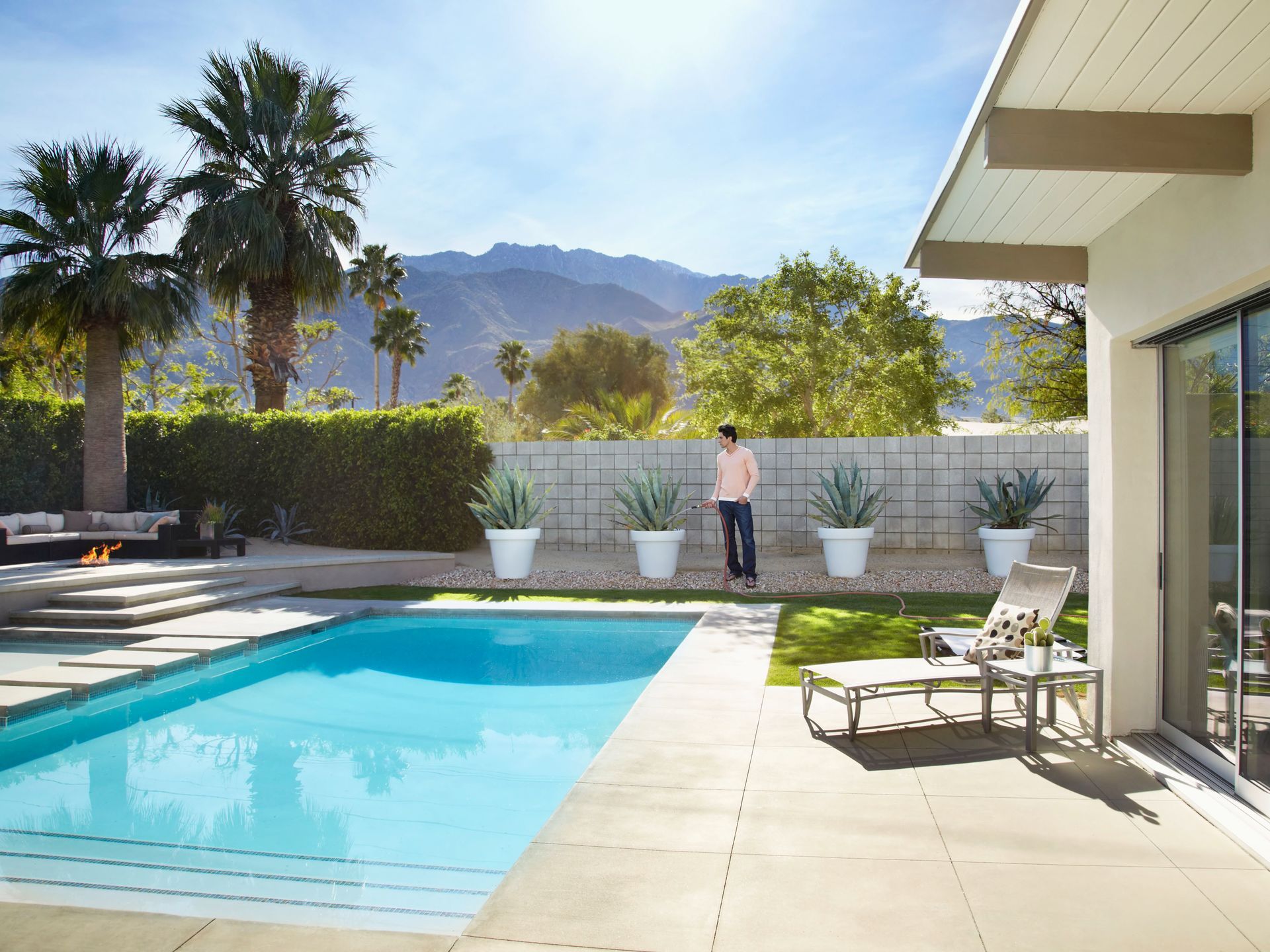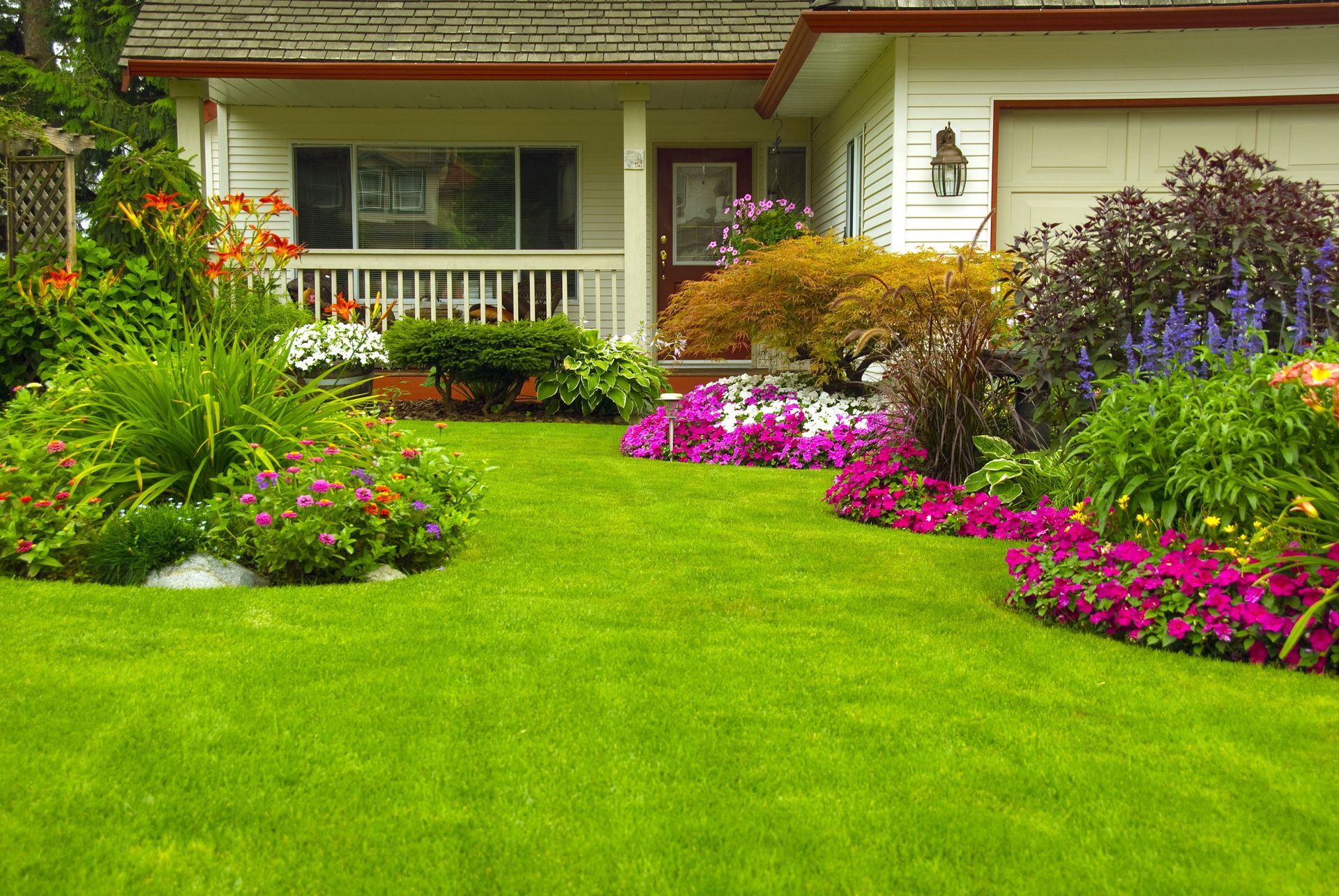Landscape Designs You Should (and Shouldn't) Have on Your Property
A well-designed landscape does more than beautify a property—it creates a lasting impression, enhances livability, and reflects a homeowner’s personal style. From traditional gardens rich with heritage to modern, minimalist spaces built for function, every design tells a story. Whether you’re drawn to the symmetry of french formal gardens or the tranquility of Japanese zen gardens, thoughtful landscape design brings balance between nature and structure. At One Call Landscape & Design, we help homeowners transform their outdoor spaces into inviting, enduring retreats that elevate both curb appeal and quality of life.
French Formal Gardens
French formal gardens are defined by geometric layouts, symmetry, and precise order, offering a sense of sophistication and grandeur. Characteristic elements include trimmed hedges, orderly pathways, fountains, and ornamental water features. This style creates visual harmony, ensuring that even small spaces feel expansive and elegant. Maintaining these gardens requires dedication, particularly in regular pruning to keep hedges and shrubs shaped, but the results are rewarding. Properly executed French formal gardens elevate a property’s aesthetic and market appeal, reflecting a homeowner’s attention to detail and appreciation for refined, classical beauty.
French formal gardens also emphasize focal points and sightlines to guide the viewer’s eye through the landscape. Central features, such as fountains, statues, or geometric flowerbeds, create a sense of structure and intentionality in the garden. The symmetry inherent in these designs allows for repetition of elements, producing a balanced and cohesive look that reinforces the garden’s formal style. Pathways are carefully aligned to complement the geometric layout, often leading visitors on a deliberate journey through the space while highlighting key visual elements. This thoughtful planning ensures that every angle of the garden contributes to a unified and aesthetically pleasing composition.
In addition to visual appeal, French formal gardens often serve functional purposes within a property. The structured layout can create clear divisions between different areas, such as entertaining spaces, vegetable or herb gardens, and ornamental sections, all while maintaining a cohesive design. Hardy plant selections, including boxwoods, yews, and seasonal flowers, ensure that the garden remains vibrant throughout the year with proper care. Incorporating irrigation systems and routine maintenance schedules helps preserve the precise shapes and symmetry, keeping the garden looking pristine. When executed thoughtfully, these gardens not only enhance curb appeal but also provide versatile, organized outdoor living areas that reflect both beauty and functionality.
Japanese Zen Gardens
Japanese zen gardens emphasize simplicity, balance, and tranquility, making them a unique addition to any property. Featuring carefully placed rocks, white gravel, minimalistic plantings, and water elements like koi ponds, these gardens create spaces for meditation and relaxation. The asymmetrical design encourages mindfulness and reflection, offering an escape from busy daily life. Zen gardens can be adapted to smaller spaces, including courtyards and entryways, providing a peaceful retreat without requiring a large footprint. Maintenance is generally lower than more intricate garden styles, though thoughtful arrangement of rocks and plants is essential. Zen gardens combine aesthetic appeal with functional serenity, making them a valued example of well-considered landscape designs.
Japanese zen gardens also incorporate symbolic elements that represent natural landscapes, such as mountains, rivers, and islands, using rocks, sand, and gravel. The raked patterns in gravel or sand mimic the flow of water, creating a calming visual rhythm that enhances the garden’s meditative qualities. Minimalistic plant choices, like bamboo, moss, or bonsai trees, are carefully selected to complement the overall design without overwhelming the space. This deliberate attention to detail ensures that each element contributes to a sense of harmony, making the garden not just visually appealing but emotionally restorative.
Furthermore, Zen gardens can be integrated seamlessly with other landscape designs to create transitional spaces between indoor and outdoor areas. Walkways, small bridges, or stepping stones can guide visitors through the garden while preserving the contemplative atmosphere. Seasonal changes, such as the delicate blossoming of cherry trees or the subtle color shifts of moss and foliage, add depth and interest throughout the year. When designed thoughtfully, zen gardens offer both aesthetic beauty and a functional space for mindfulness, reflecting a balance between natural simplicity and human intention, enhancing the overall value and appeal of the property.
Mediterranean-Influenced Landscapes
Mediterranean-influenced landscapes incorporate sun-loving, drought-tolerant plants such as olive trees, lavender, and rosemary, creating vibrant and aromatic outdoor spaces. Terracotta pots, stone accents, and climbing vines further enhance the rustic charm of this design style. Central to Mediterranean landscapes are outdoor living spaces like patios and courtyards, which encourage relaxation and entertaining. Proper plant selection and planning ensure sustainability while maintaining visual appeal. This landscape design is adaptable across climates, making it an attractive choice for homeowners who want an inviting, low-maintenance, and culturally inspired outdoor environment that adds both functional and aesthetic value to their property.
In addition to its aesthetic appeal, Mediterranean-influenced landscapes promote efficient water use, making them particularly suitable for regions prone to drought. By grouping plants with similar water needs and incorporating mulch or gravel to retain soil moisture, these gardens minimize irrigation requirements while maintaining lush greenery. The use of native or adapted plant species further enhances resilience and reduces maintenance demands. Thoughtful placement of shade trees and pergolas can also help moderate outdoor temperatures, creating comfortable gathering areas. This combination of beauty, functionality, and sustainability makes Mediterranean landscapes a practical and visually pleasing choice for long-term enjoyment and increased property value.
Cottage Gardens
Cottage gardens offer a whimsical, informal aesthetic that prioritizes charm and biodiversity. With colorful flowers, mixed ornamental and edible plants, and informal paths, these gardens attract pollinators and support local ecosystems. Native plants reduce the need for fertilizers and pesticides, making the garden eco-friendly and self-sustaining. Features such as bird baths, rustic gates, and small ponds enhance the space’s accessibility and visual appeal. Regular maintenance like pruning and deadheading ensures continuous growth and vibrant blooms. Cottage gardens embody a relaxed, romantic style that creates a picturesque, enchanting property while supporting sustainability, making them a desirable type of landscape design.
Minimalist Hardscaping
Minimalist hardscaping is a modern approach that focuses on clean lines, open spaces, and functional outdoor areas. Using durable materials like stone, concrete, and metal for patios, walls, and pathways, this design style balances practicality with aesthetics. Neutral tones and geometric shapes create visually calming spaces that highlight surrounding greenery. This landscape design is particularly effective for urban properties where maximizing space is important. According to LawnStarter, well-designed hardscaping can increase home value by up to 15%. Minimalist hardscaping offers a contemporary solution that combines low maintenance with high visual impact, making it an increasingly popular choice for modern homeowners.
Vertical Gardens
Vertical Gardens, also known as living walls, provide a sustainable and visually striking solution for small or urban spaces. Plants grow vertically on walls, fences, or standalone frames, allowing homeowners to maximize greenery without requiring large plots of land. These gardens support biodiversity and environmental benefits by hosting herbs, flowers, and even vegetables, improving air quality and aesthetic appeal. Proper irrigation and plant selection are critical for thriving vertical gardens, and they offer homeowners the opportunity to integrate creativity and sustainability into their outdoor spaces. Vertical Gardens showcase innovative landscape designs that combine functionality, environmental responsibility, and visual beauty.
Choosing the right landscape designs ensures a property is both visually appealing and functionally beneficial. From classic English and French gardens to modern minimalist hardscaping and vertical gardens, thoughtful planning and design create cohesive, harmonious outdoor spaces. According to landscaping experts, well-executed landscape designs can enhance property value while offering long-term enjoyment. For professional expertise and personalized implementation of beautiful, sustainable outdoor spaces, contact One Call Landscape & Design to transform your property into a stunning, functional retreat.




Share On: